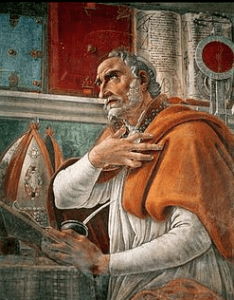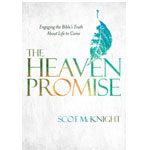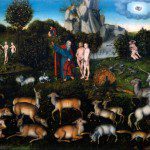 A collection of his public presentations, N.T. Wright’s new Surprised by Scripture: Engaging Contemporary Issues, brings Wright’s well-known narratival reading of Scripture/Israel’s history/Israel’s Story to bear on a number of topics, including science, the historical Adam, a “scientific approach” to the resurrection, ordaining women … and that’s just the first four chapters! Yes, plenty to dig into here and I suspect it could be a fantastic seasonal adult Bible study focus group.
A collection of his public presentations, N.T. Wright’s new Surprised by Scripture: Engaging Contemporary Issues, brings Wright’s well-known narratival reading of Scripture/Israel’s history/Israel’s Story to bear on a number of topics, including science, the historical Adam, a “scientific approach” to the resurrection, ordaining women … and that’s just the first four chapters! Yes, plenty to dig into here and I suspect it could be a fantastic seasonal adult Bible study focus group.
How does seeing Darwinism (naturalism) as a new version of “Epicureanism” aid the conversation about science and faith? What do you think of NT Wright’s proposal that “Adam and Eve” are the two hominids whom God “elected” to become God’s images on earth for the kingdom plan?
In our post today I want to look at his first two essays — “Healing the Divide between Science and Religion” and “Do We Need a Historical Adam?” — in our post today. I have the advantage of having heard Tom’s first at the BioLogos event in Manhattan (first Keller, then SMcK, then NT Wright — I’m just glad I didn’t follow Tom) and having read the first one when he sent it to me just after he wrote it and gave it.
NT Wright contends ancient Epicureanism is the more original worldview of which contemporary naturalism/Darwinism is a version. There is, then, nothing “new” in modern naturalism, though I would argue — I hope you agree — that the modern scientific study of evidence has led to a radically different foundation for a naturalistic worldview. The idea is that if God or the gods exist he or they are remote and distant and uninvolved, as one finds for instance in Lucretius; the system runs itself. Wright, no surprise here, has wonderful allusions and illustrations. Wright ties worldview to politics. Separation of church and state, he argues, is an instance of Epicureanism and scientific evolutionism.
… if you’re going to have a discussion about God’s involvement in the world in one area … while living and breathing a system in which God has been disinvolved with the world by definition and by act of Congress, there is an opposition set up, deep within the structure of how people think, that is going to make it very difficult (15).
Here’s a kick in the shin:
“… the great irony that often those who are most opposed to Darwin when it comes to reading Genesis 1 are in fact most deeply in thrall to him, or to the wider application of his theories, when it comes to social and international policy (16-17).
Too many creationists have fallen into articulating their view in the terms of the evolutionists and letting the latter determine the rules of the game. Wright seeks a more biblical, storied approach to science and faith.
The Bible teaches that God makes a world in which heaven and earth are permeable: God’s sphere, heaven, and the human sphere, earth, mutually overlap by design. But, in a sense, humans drive God out, or God drives the permeability away. Creation can’t be understood until it is understood as new creation, with christology at the very center. He is and reveals what creation is.
Scripture, in his second essay, is the authority of God in Christ through the Spirit.
On Adam and young earth science: “I wonder whether we are right even to treat the young-earth position as a kind of allowable if regrettable alternative, something we know our cousins down the road get up to but which shouldn’t stop us getting together at Thanksgiving” (31).
But these discussions about science and faith eventually end up with Adam and a “literal” or “historical” Adam. Without that historical single-man Adam soteriology falls apart. But he contends the Bible’s narrative is not first of all soteriology but kingdom. It’s about the vocation of Adam and Israel and Christ and the church. Adam’s sin was that he no longer got to rule the world under God. (Adam theology is kingdom theology.) Adam’s vocation is fulfilled in Christ. The image, then, is a vocation, and here Tom uses an image I’ve not heard from him: Adam is an “angled mirror” (35), designed to reflect God to the world and the world’s praise back to God.
God chose Adam (and Eve) as God chose Israel. That is, from the existing hominids God elected Adam and Eve to be his image-bearers. Jesus, though, is the one who fulfills that image-bearing task.











